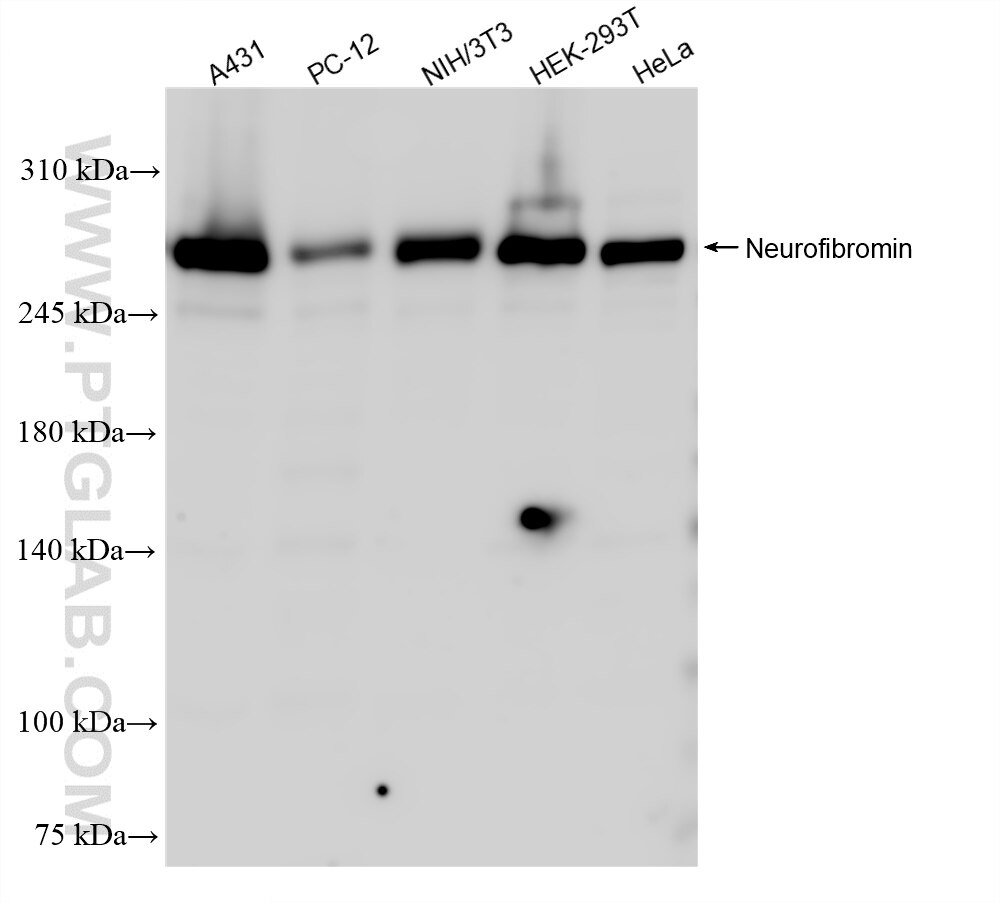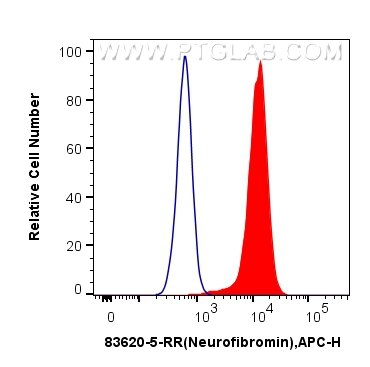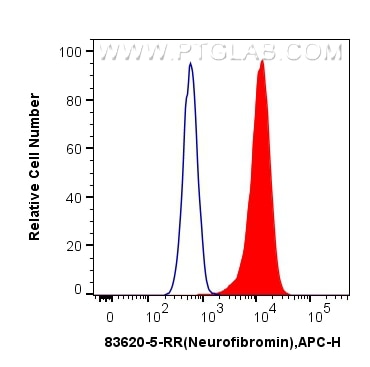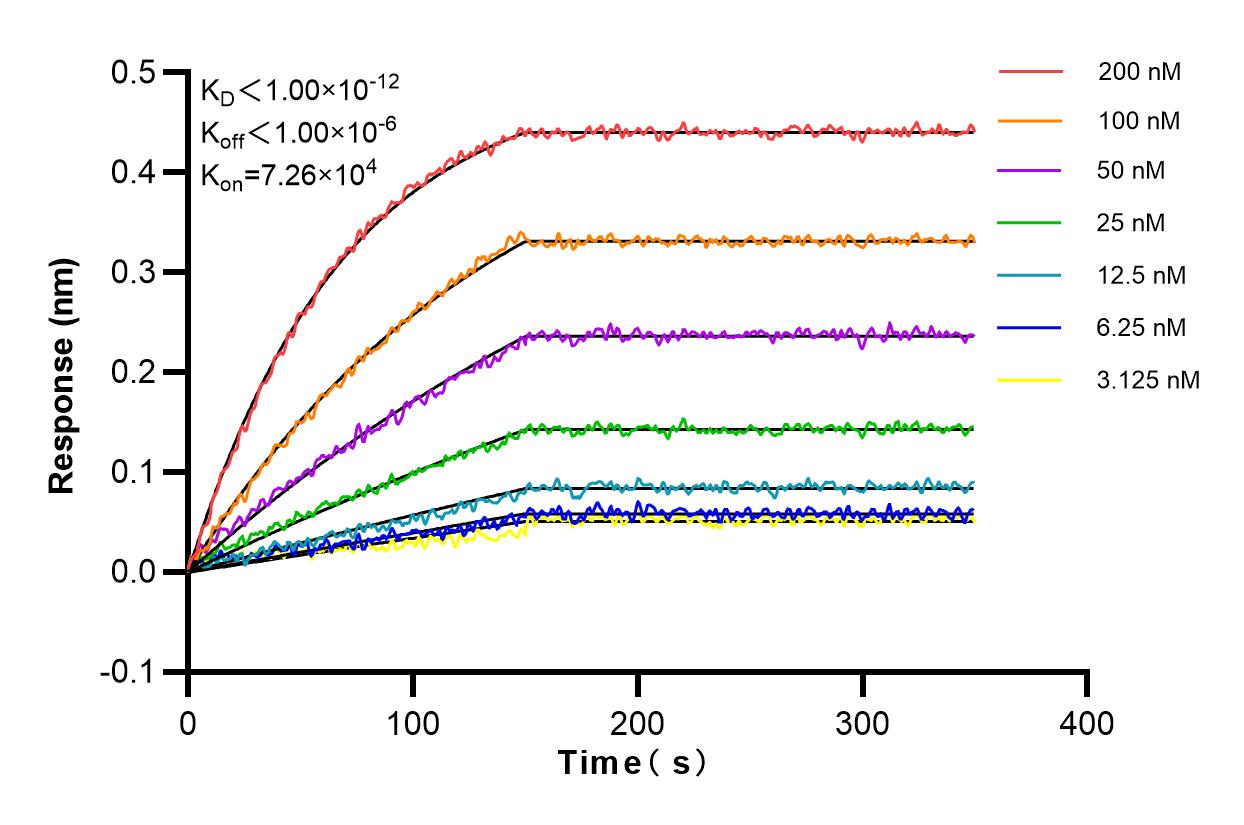Tested Applications
| Positive WB detected in | A431 cells, PC-12 cell, NIH/3T3 cells, HEK-293T cells, HeLa cells |
| Positive FC (Intra) detected in | HeLa cells, U2OS cells |
Recommended dilution
| Application | Dilution |
|---|---|
| Western Blot (WB) | WB : 1:5000-1:50000 |
| Flow Cytometry (FC) (INTRA) | FC (INTRA) : 0.25 ug per 10^6 cells in a 100 µl suspension |
| It is recommended that this reagent should be titrated in each testing system to obtain optimal results. | |
| Sample-dependent, Check data in validation data gallery. | |
Product Information
83620-5-RR targets Neurofibromin 1 in WB, FC (Intra), ELISA applications and shows reactivity with human, mouse, rat samples.
| Tested Reactivity | human, mouse, rat |
| Host / Isotype | Rabbit / IgG |
| Class | Recombinant |
| Type | Antibody |
| Immunogen | Neurofibromin 1 fusion protein Ag25799 Predict reactive species |
| Full Name | neurofibromin 1 |
| Calculated Molecular Weight | 319 kDa |
| Observed Molecular Weight | 250-280 kDa |
| GenBank Accession Number | M60915 |
| Gene Symbol | Neurofibromin 1 |
| Gene ID (NCBI) | 4763 |
| RRID | AB_3671233 |
| Conjugate | Unconjugated |
| Form | Liquid |
| Purification Method | Protein A purification |
| UNIPROT ID | P21359 |
| Storage Buffer | PBS with 0.02% sodium azide and 50% glycerol , pH 7.3 |
| Storage Conditions | Store at -20°C. Stable for one year after shipment. Aliquoting is unnecessary for -20oC storage. 20ul sizes contain 0.1% BSA. |
Background Information
NF1 codes for neurofibromin, a GTPase-activating protein that negatively regulates RAS/MAPK pathway activity by accelerating the hydrolysis of Ras-bound GTP. NF1 has a high mutation rate and mutations in NF1 can alter cellular growth control, and neural development, resulting in neurofibromatosis type 1 (NF1, also known as von Recklinghausen syndrome).
Protocols
| Product Specific Protocols | |
|---|---|
| WB protocol for Neurofibromin 1 antibody 83620-5-RR | Download protocol |
| Standard Protocols | |
|---|---|
| Click here to view our Standard Protocols |









